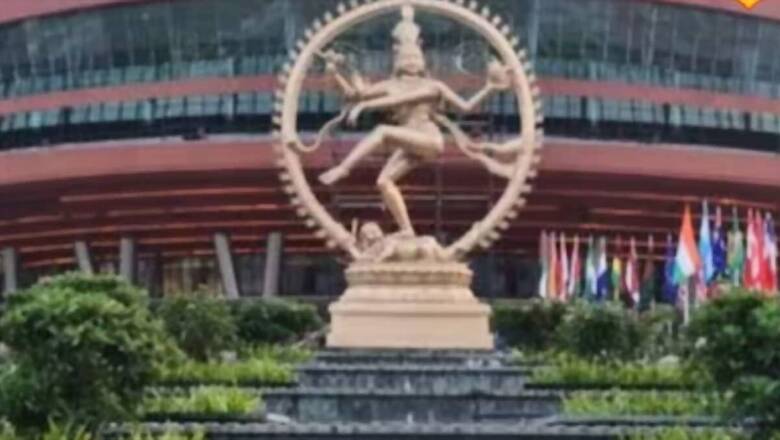
views
The G20 is a global organization that includes countries like the USA, India, Japan, and France as its members. Every year, its summit is hosted by different member nations, and this year, Delhi hosted it on September 9 and 10. To enhance the event’s ambience, the Indira Gandhi National Center for the Arts, overseen by the Central Government’s Department of Culture, chose to install a sizable Nataraja statue at the entrance of the convention centre.
The Sreedevasenadhipati Sculpture Gallery, situated in the Swamimalai Municipality of Thanjavur District, was entrusted with the task. De. Radhakrishnan, Deva. Srikandan, Deva. Swaminathan, along with a dedicated team, was responsible for crafting this remarkable statue. This idol impressively stands at 28 feet in height, spans 21 feet in width, and has a substantial weight of 18 tons. It was meticulously fashioned using Ashtadhatu, a combination of eight metals: copper, brass, iron, lead, gold, silver, silver, and mercury.
Furthermore, a sturdy pedestal, weighing 7 tons, was constructed to provide support for the Nataraja idol. With a total weight of 18 tons, this splendid statue currently graces the front of Delhi’s Bharat Mandapam. In a chat with News18, artist Swamimalai Stapathis, shared fascinating insights about their creations.
He expressed, “This holds immense significance for Tamil Nadu, the Tamils, Thanjavur district, and Swami Hill. Initially, we requested around 3 years to complete this idol, but due to government constraints, we urged our fellow craftsmen to accomplish it within 6 months. With determination, we embarked on the project, hoping that all the workers in our workshop would commit to this endeavour.
He stated, “Our unwavering belief has come to life at the Bharat Mandapam, impressing world leaders and onlookers alike. In those challenging 4 to 5 months, getting a full night’s sleep was rare; we relied on just 2 or 3 hours of rest daily. It’s a great honour to see the incredible outcome of our relentless hard work”.
Their greatest challenge was the rain. Crafting the idol required a dry environment to sun-dry properly, but the persistent rain posed a significant obstacle. Nonetheless, they successfully navigated this challenge. Typically, the soil would be separated from the mould after 10 days, but due to the shorter daylight hours, they had to commence cleaning the idol on the following day.
Despite the scorching heat, they undertook the task of cleaning this 18-ton idol. Normally, it would take a week for the metal to cool down. However, under the intense heat, they conducted the final finishing touches. The journey from their workshop to Delhi was still under high temperatures, but upon arrival, they wasted no time and completed the work.
While the statue holds an estimated value of Rs. 10 crores, the actual costs surpassed that sum. They dedicated themselves diligently to their nation, driven by passion rather than financial gain, and this endeavour filled them with great happiness.

















Comments
0 comment